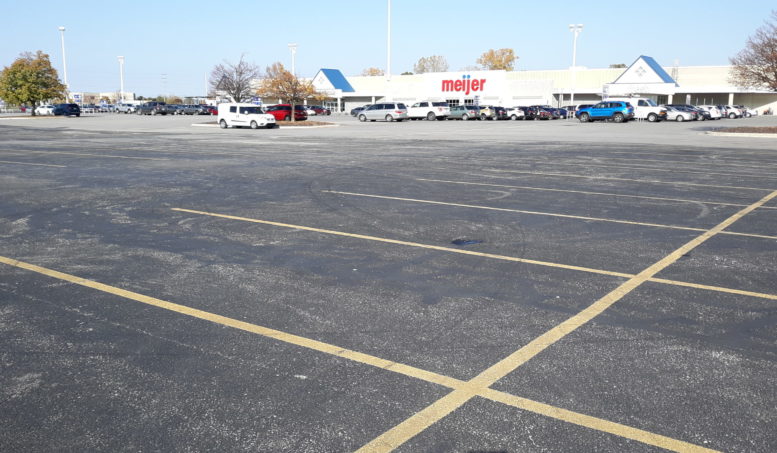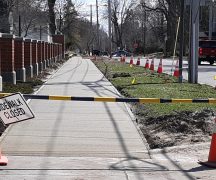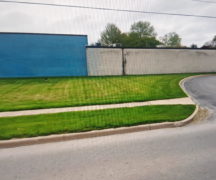By JAN LARSON McLAUGHLIN
BG Independent News
Bowling Green’s proposed parking changes are designed to prevent more oceans of unused asphalt around the city.
But at least one planning commission member voiced concern last week about the lack of parking requirements in the new zoning category permitting some small businesses in residential neighborhoods.
Member Abhishek Bhati questioned if the end to parking requirements could be the beginning of parking issues for residents living near neighborhood businesses.
“Having no parking could lead to problems,” Bhati said.
Planning Commission Chairperson Bob McOmber acknowledged that under the proposed zoning update, parking standards will be very different.
“We’re going from overly restrictive to nothing,” McOmber said.
The decision to end parking lot requirements came after businesses that complied with the city’s requirements created largely unused paved areas. Businesses that could not comply ended up not building in Bowling Green.
“We just require too much parking,” Planning Director Heather Sayler said last fall. “Too many seas of asphalt that are hardly used.”
“We’ve planned everything around vehicles – and where have we gotten ourselves?” Sayler said to the planning commission last week.
“Not everybody has a car. Not everybody wants a car,” she stressed.
ZoneCo, the consultant helping the city with the update, suggested that Bowling Green consider the concept that is being adopted in many other communities.
Currently, the city’s zoning code requires industrial sites to provide parking spaces for peak shifts of employees.
For big box retail stores, like WalMart and Meijer, the requirements have resulted in parking lots that never even get close to capacity.
And for a fast-food restaurant like McDonald’s, the rules require 15 parking spaces for the first 1,000 square feet, one additional space for every 100 square feet over that, and at least eight stacking spaces for a drive-thru.
The formula used to calculate the required parking spaces for businesses, schools and churches is based on building use, zoning and other factors. There are no parking space requirements for the downtown area.
“It’s complicated. It makes it really hard for businesses to figure out,” Sayler said last fall. “It doesn’t make sense across the board.”
And that tends to be a barrier for prospective businesses.
When the city adopted lower parking requirements in the B-5 zoning category, businesses were able to build in the Market Square development, at the northeast corner of East Wooster and North Prospect streets, plus at the Tropical Smoothie site, by the CSX tracks on East Wooster Street.
The current parking space requirements also create “heat islands,” and stormwater issues. Plus, “it’s not the best use of land,” Sayler said. Large parking lots are expensive to build and to maintain.
Though city officials want to get rid of parking space requirements, they want to maintain rules for shade trees, buffering and screening of parking lots.
Elsewhere, communities are getting rid of parking space rules – and relying on businesses to provide the parking they need.
“It doesn’t mean a business owner is going to build a business with no parking,” Sayler said. “They typically know their own needs for parking.”
The new trend plans for people over parking, she said.
“Several communities are doing this and it is working,” Sayler said.
Times have changed since the 1970s when the city’s zoning code was adopted and cars were king. While automobiles are still a must for most people in Bowling Green, fewer young people are getting driver’s licenses, Sayler said.
More people are walking, biking, using ride services, and relying on food and grocery delivery systems.
“Times are changing – not everyone wants to drive,” Sayler said. “In the 70s, they planned for parking. We are planning for people.”





